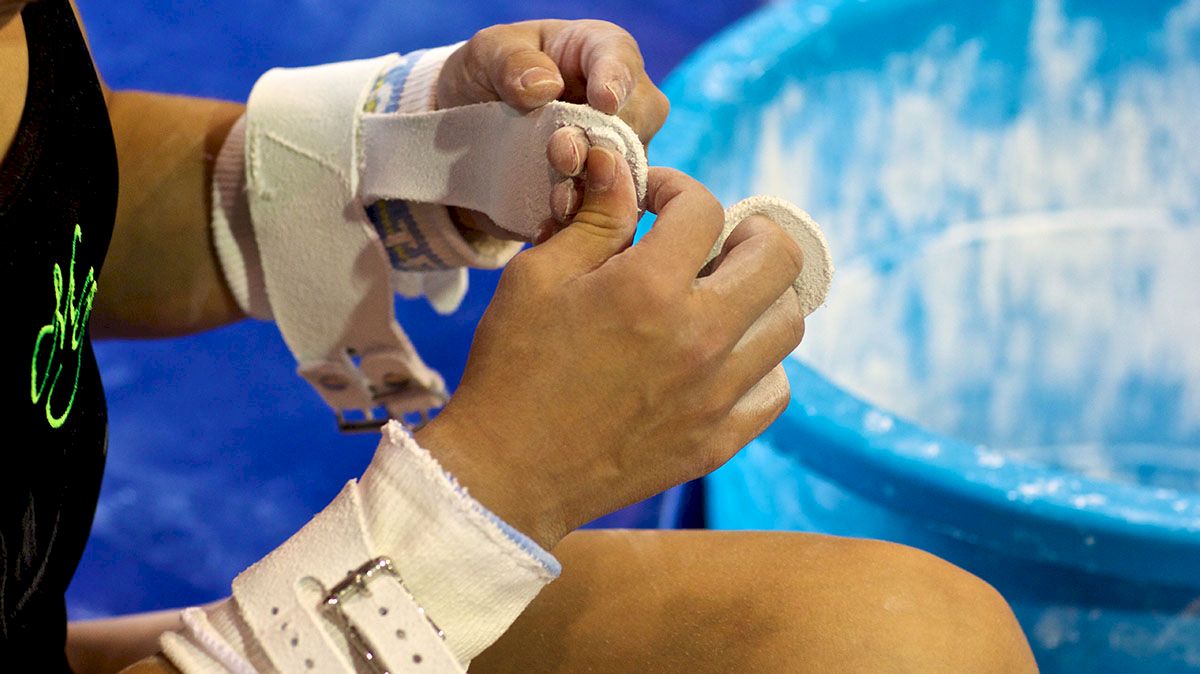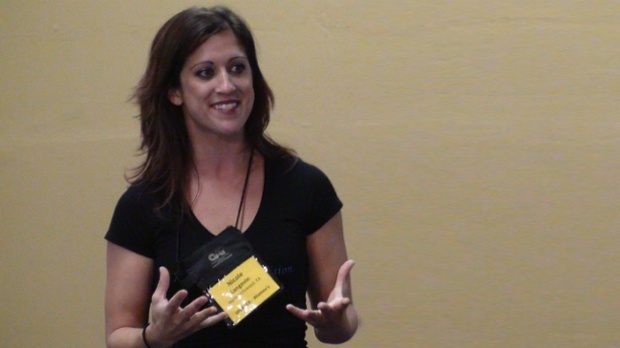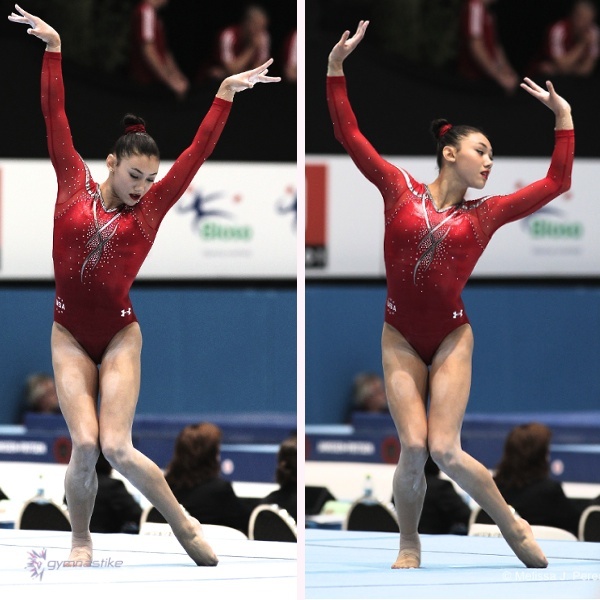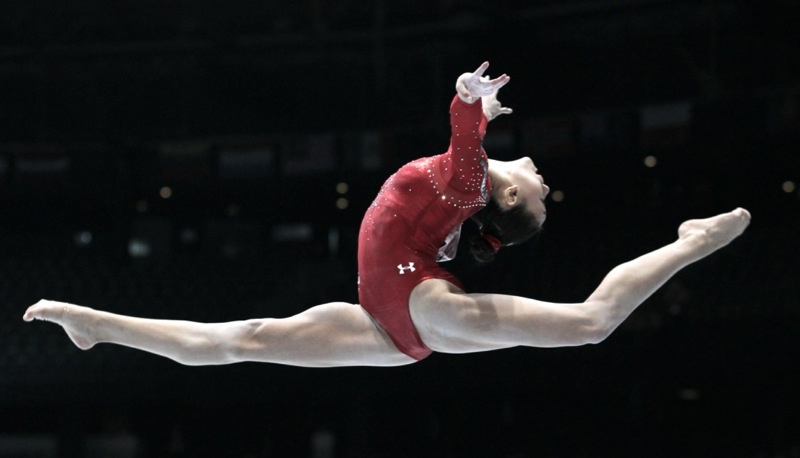Choreographer Nicole Langevin's Take on Artistry in Elite Gymnastics Today
Choreographer Nicole Langevin's Take on Artistry in Elite Gymnastics Today


Choreographer and coach Nicole Langevin is the founder, owner & director of choreography and clinics at Precision choreography. Langevin has been able to blend her past experience as a competitive gymnast and coach with live and on-screen choreography in Hollywood to create some truly compelling artistic gymnastics routines. Through Precision, Langevin has recruited an eclectic team of choreographers headlined by former USA World Champions Alicia Sacramone and Hollie Vise. Precision creates unique routines that encourage their athletes to find their "inner artist", and they have a strict, "no shimmy policy"!
Over the summer, Langevin got a call from USA Gymnastics to work with one of the top names in our sport, 2012 Olympic gold medalist Kyla Ross, on artistry. Along with Ross's choreographer, Dominic Zito, Langevin helped Ross exude expression in her performances. We can all agree, the work paid off. Gymnastike caught up with Langevin on her experience working with Kyla, and her opinion on artistry in today's elite code of points.


Kyla Ross on floor during the 2013 World Championships. Photo by Melissa Perenson.
Gymnastike: Can you tell us about working with Kyla? How did it come about, and what was the focus of your sessions with her?
Nicole Langevin: I had been watching her for years and just seen this beautiful, perfect athlete who I was just secretly wishing I could get some one-on-one time with and get some expression out of her and thought, 'wow, what an amazing package that would be to work with. And luckily, I got the call from USAG. This was in at the end of May/beginning of June. They had actually assigned me Kyla to take a routine that had already been choreographed, and pretty much bring it to life.
So, what I did with Kyla is a service that we actually offer called 'artistry training'. So, there's choreography, and then there's artistry training. I can come up with the most complex, wonderful, amazing choreography, but if the subject doesn't know how to emote it, it kind of goes to waste. So, that's where artistry training comes in, and it actually helps the athletes find their inner artist. And that's some of the work that I did with Kyla.
The first couple sessions and also the beginning of every session, I did things with her that I know were completely weird for her (laughs). But, she was open. I had her laying on her back and just working on breathing and extending that breath through the body and seeing how your inhale can extend through your shoulders, and just getting her to feel different types of movement. And getting some movement in her ribcage, which I've noticed a lot of elite athletes don't have. So, it's working within the ribcage and trying to get some movement there so it's not all in the limbs. Once I was able to get her to open up, then the last couple of sessions with her were just tweaking - literally picking sections of her floor routine and adding artistry upgrades. So, adding a breath here and trying to expand the movement a little bit more. And I think that on top of the work that [choreographer] Dominic [Zito] was doing with her - continually working that choreography and working a lot of eye contact with her - I think the combination of the two epitomizes the idea that it takes a village. I know seeing her at P&G Championships, I almost cried after it! It was just, wow, she gets it. And it was great to see the real specific things that she was given and then seeing Kyla put her own stuff in there. That's really a great reward to be able to give someone a gift to find their expression because it's a really big deal to be able to do that. So to give her some tricks on how to find it was really great. And then with Worlds, I think she took it even further.
Watch Kyla's 2013 World All Around Finals floor routine which earned an 8.633 execution score:
G: As we were talking before, and I think many out there would agree, that there was such a huge transformation in Kyla's artistry over the past year, but it wasn't reflected in her E scores at World Championships. And on a bigger level, it's hard to see where artistry can really boost a score. What's your take on the never-ending debate regarding artistry in the elite code of points?
NL: Well, if I could rule the gymnastics world (laughs), I would keep the E score, keep the D score, and add an A score. And from what I understand - obviously I'm not a part of the FIG, I'm not the decision maker - but from what I understand, there was supposed to have been an installment of an 8 tenth artistry rule that was supposed to go across the board and be it's own part of the execution score, worth eight tenths for a breathtaking, Cirque du Soleil style performance with huge, Simone Biles tumbling - that kind of routine would have a full eight tenth advantage over someone who didn't have that. And I think that, we all watched World Championships and some those E scores were a little questionable if not insulting to the work that had been done. I think that if there's going to be such a push for that sort of artistry, which obviously I believe in through my line of work, I think the judges need to be held accountable for 'where is that?'. If [artistry counts for] eight tenths, then just add an A score that's out of eight tenths and show [us] what that [score] is.
I don't think that we need to adjust and weigh it to a point where it's not even gymnastics anymore - it is called artistic gymnastics for a reason. And I feel like if you go out there and do a performance with no big tricks, then you're just doing a dance routine. And if you do a bunch of tricks without a beautiful performance then you're just doing glorified parkour. The incredible ability to combine the two, and then you have artistic gymnastics. And that's all I think that they should be looking for- a strong combination of both. I don't think either side should be discounted. But yes, an "A" artistry score would be my solution to it all. Because with execution, you can have straight legs and pointed toes and that's what we all want, so the artistry has got to be its own thing.

Photo by Melissa Perenson.

Photo by Melissa Perenson.
G: Are you hopeful that the FIG is really moving towards an emphasis on artistry?
NL: Well, I'm hopeful but I don't think that Worlds showed us that. And I think that, you know, I am so impressed and amazed by everything I saw, and I don't think that the outcome should have been any different; the best athletes were out there and represented and it was fantastic, but those execution scores didn't reflect any sort of reward for artistry.
So, if I were a coach of an athlete out on that floor, and was watching to see those E scores and try to figure out what I need to do to get my kid there, I wouldn't have been shown that an artistic routine is going to get that advantage. I would think that I have to do a double double and that's more important than anything. I don't think that those E scores motivated anyone to do anything outside of the ordinary because those few that did, didn't have the 9.50's or the eight tenths in their score. Obviously, a super high difficulty score is going to be a huge advantage. So, the total is what it is. But, I'd like to see, why didn't Kyla have a 9.40 or a 9.50? Where was that? Did you take eight tenths of artistry, because if so, who did you give it to, and who are you going to give it to?
You know, looking at those E scores, the question is, is there a standard in the judges head that anything below, for example, a Courtney Kupets tkatchev or a Gabby Douglas tkatchev, and anything lower than that is going to incur a deduction? Or, is her tkatchev something that should be rewarded, and you don't get slammed for not doing that. If you're doing what is asked and you're doing it properly, or, in some of the athletes cases, perfectly, I don't think you should get a deduction for not going above and beyond.
There's an interesting rule in the men's compulsory program where they have that stuff built in. They have what's called 'virtuosity points'. For instance, if a little guy is required to do a press handstand from a stand, and he does it from a sit, he gets a five tenth bonus because he's showing something above and beyond. He doesn't get deducted for not doing it, but there's a bonus for doing it. And they already have the open-ended [scoring] with those guys from early on, so something like that [could work] - go ahead and give the bonus to above and beyond. But I don't think someone like Kyla Ross should be scoring in the 8's. That's crazy.
There's more artistry talk to come with Nicole. What do you think? Would you like to see an A score added to elite scoring?
There's more artistry talk to come with Nicole. What do you think? Would you like to see an A score added to elite scoring?